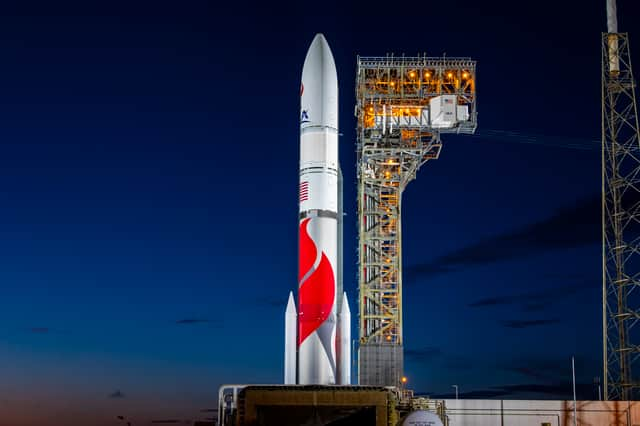Peregrine: US spacecraft suffers from fuel leak and loss of propellant as time runs out for private moon mission


A private moon mission that blasted into space on Monday (8 January) has a problem with the propulsion system due to a “critical loss of propellant”, and UK scientists who helped develop a piece of technology for the Moon mission are working around the clock to gather data from the spacecraft before it loses power after it encountered a fuel leak shortly after launch.
The Peregrine Mission One (PM1), built by US space company Astrobotic and carrying a piece of technology developed by UK scientists, would be the first private probe to land on the lunar surface but just hours after its launch, Astrobotic reported that an anomaly had occurred which prevented the lander from achieving a stable position pointing towards the Sun.
Advertisement
Hide AdAdvertisement
Hide AdThe company has said teams are assessing “alternative mission profiles” because of the issue, but the issue could prevent the spacecraft from making a soft landing on the Moon.
In a statement on X, formerly Twitter, the company said: “Unfortunately, it appears the failure within the propulsion system is causing a critical loss of propellant.
“The team is working to try and stabilise this loss, but given the situation, we have prioritised maximising the science and data we can capture. We are currently assessing what alternative mission profiles may be feasible at this time.”
In a previous update, Astrobotic said that as efforts to resolve the issue continued, the spacecraft’s battery levels were dropping.
Advertisement
Hide AdAdvertisement
Hide AdThe company said: “The team believes that the likely cause of the unstable sun-pointing is a propulsion anomaly that, if proven true, threatens the ability of the spacecraft to soft land on the Moon.”
Shortly after issuing the second update, the company announced that following a short expected communication blackout, it had made contact with Peregrine, and that an “improvised manoeuvre” was successful in reorienting its solar array towards the Sun.
Astrobotics said on X: “We have successfully re-established communications with Peregrine after the known communication blackout. The team’s improvised manoeuvre was successful in reorienting Peregrine’s solar array towards the Sun. We are now charging the battery. The Mission Anomaly Board continues to evaluate the data we’re receiving and is assessing the status of what we believe to be the root of the anomaly: a failure within the propulsion system.”
It added that the team was “grateful for the outpouring of support” it had received on social media, and through to phone calls and helping hands, and offered “a heartfelt thank you from the entire Peregrine Mission One team”.
Advertisement
Hide AdAdvertisement
Hide AdThe Vulcan rocket blasted off from Cape Canaveral in Florida at 7.18am GMT. After separating from the rocket, the spacecraft was flying solo on its way to the Moon, where an attempted landing was scheduled for 23 February. Onboard is an instrument known as the Peregrine Ion Trap Mass Spectrometer (PITMS), which was developed in the UK by scientists from The Open University (OU) and the Science and Technology Facilities Council (STFC) RAL Space – the UK’s national space lab – in collaboration with Nasa’s Goddard Space Flight Centre in Washington DC.
A key component of PITMS, which will explore the Moon’s atmosphere by measuring water and other molecules, was developed in the UK with £14m of government funding through the UK’s membership of the European Space Agency. The data collected will contribute to our understanding of the Moon’s potential to provide resources such as water, opening new possibilities for future human presence on the lunar surface. The UK-built component – called the Exospheric Mass Spectrometer – represents the first instrument on the Moon that has been built in the UK and in Europe and in part, will help researchers study atoms and molecules in a gas.
Comment Guidelines
National World encourages reader discussion on our stories. User feedback, insights and back-and-forth exchanges add a rich layer of context to reporting. Please review our Community Guidelines before commenting.
